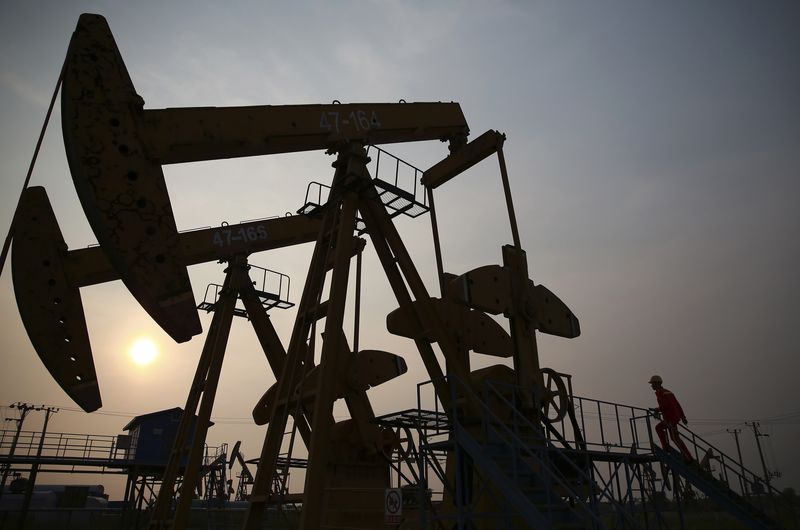Investing.com - Oil prices rose on Tuesday morning in Asia amid tensions in the Middle East.
Crude Oil WTI Futures for May delivery were trading at $62.30 a barrel in Asia at 10:50PM ET (02:50 GMT), up 0.27%. Brent Oil Futures for May delivery, traded in London, were up 0.26% at $66.22 per barrel.
Oil prices were lifted by concerns that the U.S. may reimpose sanctions on Iran, as well as tensions between Saudi Arabia and Iran.
Venezuela’s declining crude production is also supporting oil markets. An economic crisis has cut Venezuela’s oil production by almost half since early 2005 to well below 2 million barrels per day (bpd). The International Energy Agency said last week that the country’s crude production was “clearly vulnerable to an accelerated decline”, and that this could tip global markets into deficit.
However, looming over oil markets is surging U.S. crude output, which has reached 10.38 million bpd, up by more than 23% since mid-2016. The U.S. has already surpassed top exporter Saudi Arabia and is expected to overtake Russia as the top producer by late 2018, with output of more than 11 million bpd.
Rising drilling activity in the U.S. also points to further increases in output. With 800 active rigs, the U.S. rig count is now much higher than a year ago when only 631 rigs were active.
The relentless climb in U.S. production is capping oil prices and undermining efforts from the Organization of the Petroleum Exporting Countries (OPEC) to prop up prices by withholding production. OPEC has been cutting output by around 1.2 million bpd since January 2017, which has inadvertently allowed the U.S. to take more market share.
According to the International Energy Agency (IEA), non-OPEC supply, led by the U.S., will grow by 1.8 million bpd this year, while demand will only grow by about 1.5 million bpd.
